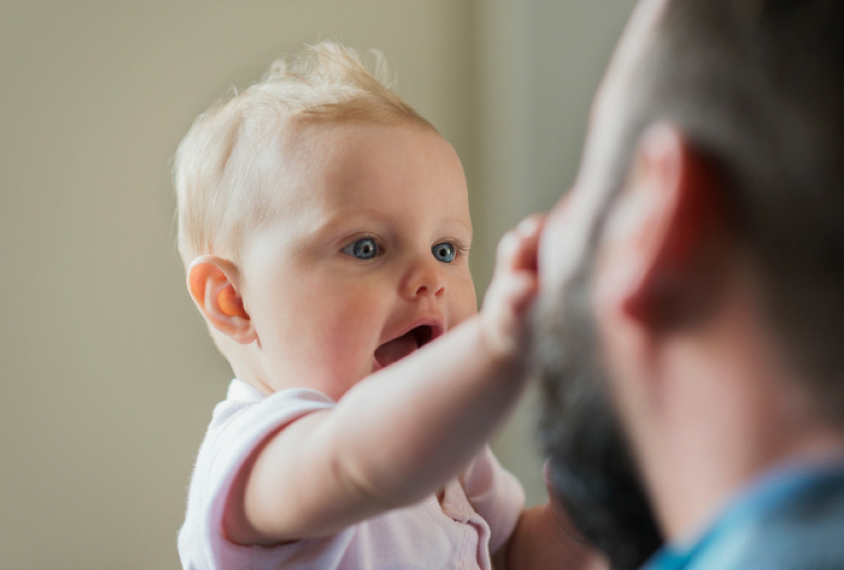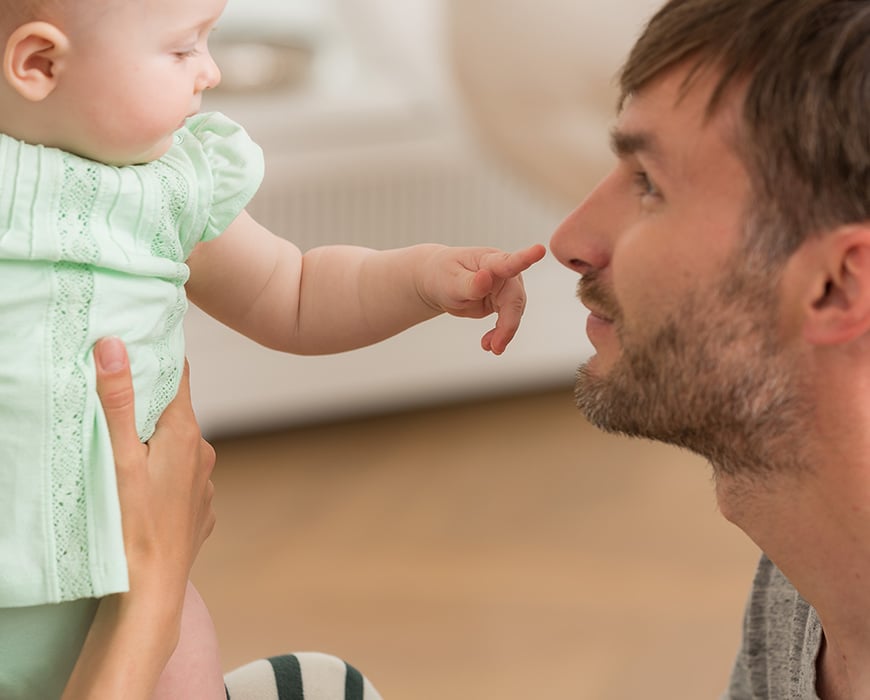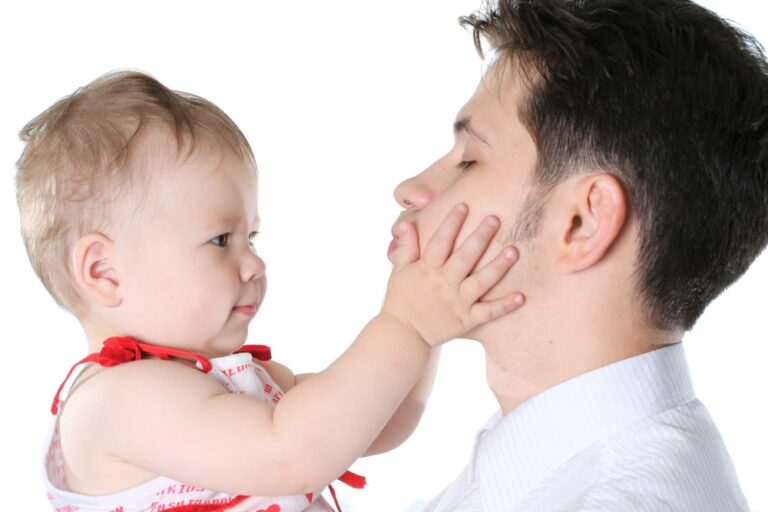Babies touch your face for various reasons, primarily related to their early sensory and social development. They’re naturally curious and use touch to explore the world around them, and your face is an accessible and interesting target for their curiosity. This behavior also fosters bonding and connection with caregivers, providing a sense of security and comfort. Babies often imitate the actions they see, and touching faces is a common behavior they may copy. They also use touch for self-soothing and communication.
It’s important to respond with gentleness and affection, as this behavior can strengthen the emotional connection between the baby and their caregiver while facilitating their developmental milestones. However, hygiene and cleanliness should be maintained, especially if the baby has been in contact with potentially dirty objects or surfaces.
Why Do Babies Touch Faces?

Babies touch your face for a variety of reasons, each of which contributes to their physical, emotional, and social development.
Exploring the world
Using touch to learn about the environment: Babies are born with a strong sense of curiosity, and one of their primary methods for exploring the world around them is through touch. It’s a tactile way for them to gather information about objects, surfaces, and people.
Touching your face is a way for them to understand this new and fascinating world they’ve entered. Babies often reach out and grab anything within their reach, and your face, being right in front of them, becomes a natural target for this exploration.
Attraction to different textures and features of the face: Your face offers a rich sensory experience for babies. It contains various textures, such as the softness of cheeks, the smoothness of the forehead, the roughness of facial hair, and the warmth of your skin.
Babies are drawn to these different sensations, and touching your face provides a sensory adventure that captivates their interest. This sensory exploration is a fundamental aspect of their early development.
Bonding and connection
The role of touch in emotional bonding: Touch is a powerful means of building emotional bonds between babies and their caregivers. When a baby touches your face, it’s a physical expression of their desire for closeness and connection. Responding to this touch with affection and attentiveness helps reinforce the emotional connection, creating a sense of trust and security in the baby.
How touching the caregiver’s face provides security and comfort: For a baby, the caregiver’s face is a symbol of safety and comfort. When they reach out and touch your face, it’s often because they are seeking reassurance and a feeling of security.
In addition, the soft and familiar touch of a parent’s face can be a soothing and calming experience for a baby. It communicates to them that they are in a safe and nurturing environment.
Visual and sensory stimulation
Limited vision in newborns: Newborns have limited visual capabilities, and they can see objects up close more clearly than those at a distance. Your face, when held close to theirs, is one of the few things they can see distinctly. This proximity makes your face an enticing visual target for them.
The face as a visually attractive and contrasting target: The human face stands out as a visually appealing and contrasting target due to its various features, such as eyes, nose, mouth, and contrasting skin tones. These visual elements draw the baby’s attention and stimulate their developing visual senses, making your face an interesting focal point.
Mimicking behavior
Imitation as a part of learning and social development: Babies learn by observing and imitating the actions of those around them. When they see someone touching their own face or another person’s face, they may try to mimic this behavior. This imitation is a fundamental aspect of their learning and social development, helping them understand and engage with the world.
Babies copying actions they see in caregivers: Caregivers play a vital role in a baby’s early development. Babies often look up to their caregivers and mimic their actions, including touching their faces. This behavior allows them to learn and develop essential skills as they grow.
Self-soothing
Exploring their own face and body for comfort: Babies also touch their own faces and bodies as a means of self-soothing. Feeling the sensation of their own skin and facial features can provide them with a sense of comfort and security. This self-soothing behavior can be especially noticeable when they are tired, agitated, or in need of comfort.
Communication
Non-verbal communication through touch: Babies communicate their needs and emotions through non-verbal cues, and touch is one of their primary modes of communication. When they touch your face, they might be conveying a range of messages, from seeking attention and comfort to expressing joy or curiosity.
Conveying needs and emotions through touching the caregiver’s face: Touching the caregiver’s face can be a way for babies to convey their immediate needs or feelings. For example, a gentle touch on the parent’s cheek might signal a desire for comfort, while a more active touch might indicate excitement or playfulness. Caregivers often learn to interpret these non-verbal cues to better understand and respond to their baby’s needs.
How to Respond to Babies Touching Your Face?

Responding to a baby’s touch with gentleness and affection is essential for their emotional well-being and development.
Importance of responding with gentleness and affection
Babies are highly sensitive to the way they are treated, and their early experiences with touch can significantly impact their emotional and psychological development. Responding with gentleness and affection is crucial because it helps create a secure and nurturing environment for the baby.
Gentle and loving responses to a baby’s touch convey a sense of safety and trust, reinforcing their emotional bond with their caregiver. This early emotional connection serves as a foundation for their future relationships and social development.
Avoiding rough or negative reactions to a baby’s touch is essential, as it ensures that the baby continues to explore and learn through touch without fear or discomfort. A caregiver’s warm response can make the baby feel valued and loved.
Fostering the emotional connection between the baby and caregiver
When you respond with affection and attentiveness to a baby’s touch, you are reinforcing the emotional connection between the baby and the caregiver. This bond is vital for the baby’s emotional well-being and development.
The act of responding to a baby’s touch, whether it’s a gentle caress of your face or an attempt to reach out to you, helps the baby build trust and a sense of security. This trust in the caregiver becomes a secure base from which the baby can explore the world and form relationships with others.
The emotional connection between the baby and caregiver forms the basis for healthy attachment, which is associated with positive outcomes in the child’s social, emotional, and cognitive development. Caregivers who respond with love and attention help instill a sense of self-worth and belonging in the child.
Hygiene and cleanliness considerations
While it’s important to respond with gentleness and affection, caregivers must also maintain hygiene and cleanliness when a baby touches their face. Babies often have their hands in their mouths, and their immune systems are still developing, making them more susceptible to illnesses.
Caregivers should ensure that their hands and the baby’s hands are clean before responding to the baby’s touch. Regular hand-washing is crucial to prevent the transfer of germs or bacteria to the baby’s face.
Caregivers should also be cautious about where the baby has been and what they have touched before they engage in face-to-face interactions. Avoiding contact if the baby has been in contact with potentially dirty objects or surfaces can help protect their health.
Balancing the need for cleanliness with the need for affection is important. Caregivers can use gentle touches or offer a clean and soft cloth as a buffer to protect the baby’s face while still responding with love and care.
FAQ’s
Why do babies put their hands in my mouth?
Babies explore the world through their senses, including touch. Putting hands in your mouth is a way to understand different textures and sensations.
Do babies with autism smile at you?
Yes, babies with autism can smile, but their social and communication development varies.
Should I stop a baby from putting hands in the mouth?
It’s generally okay for babies to put their hands in their mouth, as it’s a natural part of development. It helps with sensory exploration and self-soothing.
Why is my baby chewing my hands but not hungry?
Babies often use their mouths to explore, teethe, or self-soothe. Chewing on hands doesn’t necessarily indicate hunger.
Why do babies put their mouth on you?
Babies use their mouths to explore and seek comfort. They may put their mouth on you for reassurance and a sense of security.
How can you communicate with your baby without using words?
Non-verbal communication is essential. Use eye contact, facial expressions, gestures, and touch to bond and understand your baby’s needs.
Final Words
Babies touch your face for a variety of essential reasons. It’s their way of exploring the world, seeking comfort, and connecting with their caregivers. They’re attracted to the different textures and features of the face, and this touch-based exploration aids in their sensory development. Bonding with caregivers is another significant reason, as touching your face provides a sense of security and emotional connection.
Moreover, babies also mimic behaviors they see, use self-soothing techniques, and communicate their needs through touch. Responding with gentleness and affection is vital to foster this emotional connection. In addition, it’s essential to maintain hygiene and cleanliness to keep the baby healthy.

